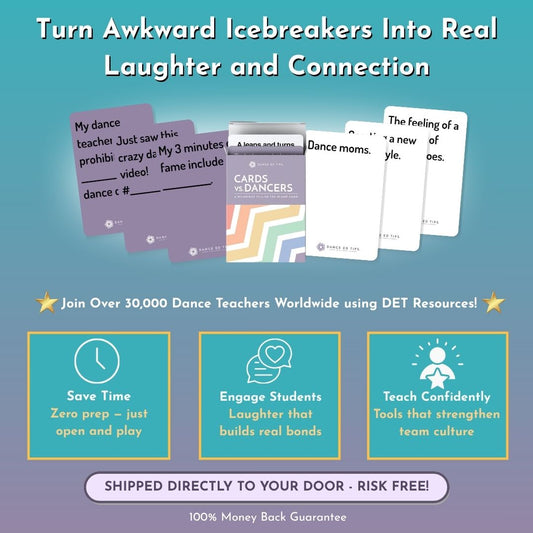By: Olivia Mode-Cater
Dancers sitting out with injuries is a challenge for teachers in all settings: studios, K-12 schools, and higher education. You want the student to come to class because you know they can benefit from being an observer; however, it is hard to keep them involved and engaged in the material, and it is even more challenging to quantify the work of the injured student in comparison with those that are moving.
In the many classrooms I have visited, I have seen various solutions:
- The injured student only observes
- The injured student takes notes on the class
- The teacher builds a parallel lesson plan that supports the learning objectives of the lesson
- The dancer reads a dance article and writes a summary
The ideal solution is obviously to build a parallel lesson plan that reaches the same learning objectives being covered for the rest of the students; however, this requires you knowing about the injury ahead of time (which rarely happens) and will take up a lot of time to plan. I know dance teachers that do this and I commend them for their incredible dedication to their students and their thoughtful teaching practice. I also think that this strategy can be more easily done when teaching dance history, anatomy, nutrition, and etc. I find that this can be quite difficult to do when teaching just a straight technique class.
That is why I have created an injury assignment worksheet that is designed for students who are sitting out of technique classes. This is a collection of various questions I have seen other teachers use with the addition of some of my own. I find this #danceEDtip effective for a few reasons:
- It takes less planning time on my behalf because it is a standard assignment that can fit any type of technique class.
- It can work for the same student several times in a row or throughout the year.
- It is a way for students to earn the same amount of points for the day as the students who are moving. This makes grading easier for me.
- It forces the injured student to pay attention to important things in the class that they should be paying attention to.
- It saves you classroom time because it can become a procedure that students know how to do. You can have copies printed in a folder or it can be uploaded to your class website. Any student with an injury knows what to do and can immediately get to work.
Here are a few final things to consider:
- The injured student must know that they have to complete this before the end of class. It is not to be a homework assignment.
- This worksheet is not appropriate for a student with a long-term injury. When that happens, I create a bigger project that supports the learning objectives of the unit. The maximum I would use this is for is 5 consecutive days.
Whether you decide to use this #danceEDtip or not, finding a solution to this problem will help you smooth out your routines and procedures in your classroom. Figuring out what to do with an injured dancer can be stressful and frustrating. Therefore, building a preemptive procedure that works for you will take a way this worry and allow you to focus on delivering your lesson plan.
If you would like a copy of my injury assignment, subscribe to my #danceEDtip newsletter at the bottom of the homepage of the website! I’d be happy to share!
Happy teaching!
Olivia





